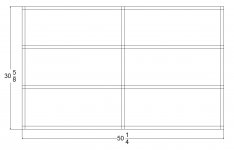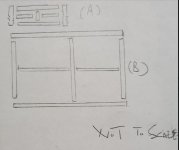Mike Goetzke
Member
- Joined
- Jul 12, 2008
- Messages
- 1,177
Building a dresser and making a plywood frame for it. I keep changing my mind where to have the domino joints. I think the easiest would be to have the three vertical members one piece and all the horizontal ones split in half. But, something keeps telling me it would be best to have at least the bottom one piece.
Any help appreciated.
[attachimg=1]
Any help appreciated.
[attachimg=1]



